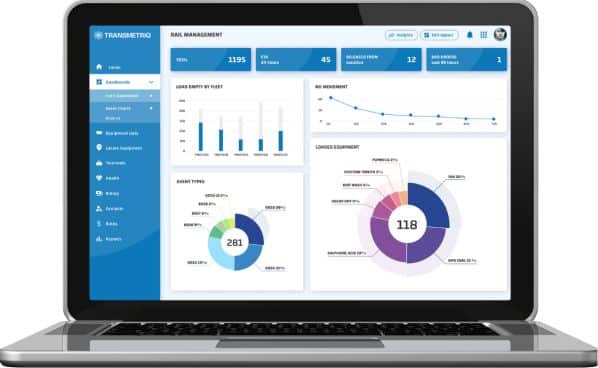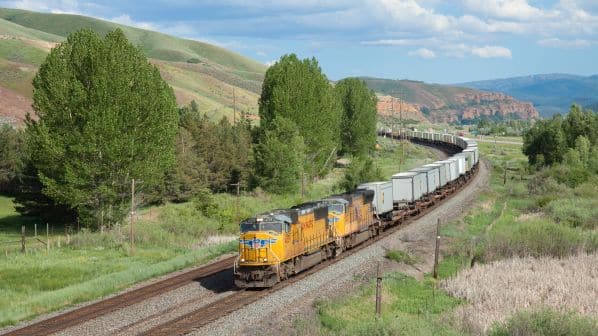ARTIFICIAL intelligence (AI) now appears to be everywhere. Since the introduction of ChatGPT, DALL·E 2 and other data-trained models, AI has become a prevalent term. But the technology is not just reserved for programmes that can create wacky images or write a play based on a prompt.
Language models such as ChatGPT use deep learning techniques and are trained on a large amount of data to process and generate text or images effectively. During training, the model learns grammar, syntax, and word associations by predicting the next word in a sentence. After pretraining, it goes through a fine-tuning process using a specific dataset reviewed by humans.
Now, similar programmes are being trained on data collected for decades by Railinc to support freight operations in North America.
Railinc was set up by the Association of American Railroads (AAR) nearly four decades ago as an information technology department and was spun off as a wholly-owned, for-profit subsidiary of the AAR in 1999. TransmetriQ, the commercial products arm of Railinc, was then created in 2021.
Railinc is in some ways the neutral Switzerland between the Class 1 railways and short line operators, wagon owners, and shippers. Since it was formed, Railinc has gathered and stored a huge amount of data on freight operations and movements across the country. “We basically serve as the mail carrier, we get [the data] and we pass it on to who needs it,” says senior product manager at TransmetriQ, Mr Danny Dever. “We have all the data coming in from different railways, and then we can look at it collectively and then give back the information without [identifying each individual] railroad.”
Railways are data rich, Dever says, and they need support in using this data to create actionable insights. “It’s something we’ve come across a few times recently,” he says. “People are saying ‘we’ve got all the technology to gather this data now, but what do we do with it?’ They need ways to be able to understand the data and to see what actions to take, and that’s what we’re trying to do more of as we have and understand the data. [We’re exploring] how we create an action or give them something to create an action instead of them looking at this big old data lake of information.”
Vision
“Most of the data that’s feeding those systems that they’re using comes from us, so why can’t we just make a system that you can do it all from,” Dever says. “So that’s the vision we’re trying to accomplish.”
In developing these systems, Railinc undertook hundreds of voice of customer (VoC) surveys to understand how they were operating, and through this realised they were often using four or five different systems to manage their business.
The company has also developed a range of products, including:
- RailSight, a single-source rail track and trace provider which provides critical, near-real-time rail shipment and equipment management insights
- Asset Manager, a single-source dashboarding and analysis tool for asset health, maintenance, and wagon management
- CarLogix, a complete wagon repair management system designed to streamline maintenance processes and control costs, and
- the QSense Platform, a software as a service (SaaS) product that supports data ingestion through multiple methods, including managed file transfer, asynchronous messaging, and web service APIs.
RailSight was initially the flagship product of TransmetriQ. But the company has since evolved from simply providing visibility of rail assets or freight movements to providing insights and foresight, using AI to learn from the data it has stored.
This has led to the creation of a number of products, including the Rail Management System (RMS) in April 2022, which combines customised, accurate, and near-real-time data with functionality such as electronic billing to enable shippers to better manage their rail operations. The system includes a lease management component, as well as maintenance management solutions.

“It’s really the place where you’re going to look at the equipment, where it is, its current status and how it can be utilised,” Dever says. “It’s really focusing on either the shippers that own equipment or lease equipment.”
In December last year, Railinc entered into a partnership with Commtrex, a rail logistics and fleet management services provider, to offer outsourced logistics and fleet management services to its customers.
“Most of the data that’s feeding those systems that they’re using comes from us, so why can’t we just make a system that you can do it all from. So that’s the vision we’re trying to accomplish.”
Danny Dever, senior product manager at TransmetriQ
The need for the partnership was highlighted during the VoC surveys, Dever says. Railinc was finding customers that at times would require human intervention instead of simply relying on the software. Commtrex, on the other hand, was impressed with Railinc’s software and was looking to use it in its business. “It just seemed like a perfect fit,” Dever says.
The partnership means that as well as the RMS software, Railinc can now provide access to Commtrex’s fully outsourced or on-demand physical management of a customer’s rail programme. In turn, Commtrex is using TransmetriQ software and data analytics products to provide end-to-end visibility and streamline operations for its members.
The Advanced ETA tool also uses models built by Railinc’s data scientists. Railinc holds a large part of the historic data of where interline shipments have travelled, which routes they took, when they were estimated to arrive and when they actually did. Dever says this is important because shippers need to know when a future shipment will arrive in order to ensure that the right equipment or staff are in place to receive it. The existing railway ETA systems were “OK,” Dever says, but are still not great. “That’s why we went down the path of trying to use machine learning to look at the history and come up with a better answer,” he says.
While still not perfect, as it can often be affected by changes in operation, Dever says the system developed by Railinc has been successful, particularly for intermodal freight which often travels between hubs. “It seems to be giving a generally better ETA on carload shipments, and it’s really better on intermodal.”
The system can also help alleviate another difficulty: visibility of when equipment will be returned to a shipper. Equipment such as boxcars or wagons for automotive traffic is often put into a pool during operation, which can result in it then being sent on to other members of the pool instead of back to the original shipper. “It might come to a general hub and then it might get sent to different shippers based on allocations,” Dever explains. “So trying to predict how that allocation might go to shipper A or shipper B or shipper C, [we’re] trying to see if we can figure that out using machine learning.”
For asset managers, TransmetriQ has used the historic data on wheelsets to create a prediction model to determine when a wheelset may need to be withdrawn from service. Dever says this may be useful for ensuring that a wheelset is serviced before it fails while operating on a Class 1 railway, for example, which would incur higher charges for wheelset repair.
A challenging element of developing the systems was hiring skilled personnel in a crowded market, a situation compounded by rail’s conservative image.
However, Railinc has been able to triple the size of its team of highly qualified data scientists. “Railroading is sometimes seen as an old, antiquated business, but I think the few folks that we’ve got, they get in here and they see really challenging problems that need to be solved and they get excited about it,” Dever says.
These systems are likely to improve as technology develops and the data becomes more up-to-date and accurate.
Class 1 railway CSX announced in April that it is starting a programme to equip its wagons and containers with telematics equipment featuring embedded GPS receivers. The current coordinates of wagons and containers will be transmitted via communications satellites to the central CSX database, allowing customers to continuously track the location of their cargo.
However, it will still be some time before all wagons are equipped with the full range of sensors, with operators still having to rely on trackside detectors. “It may not be exactly real time, but it’s pretty near real time what they’re getting,” Dever says.

